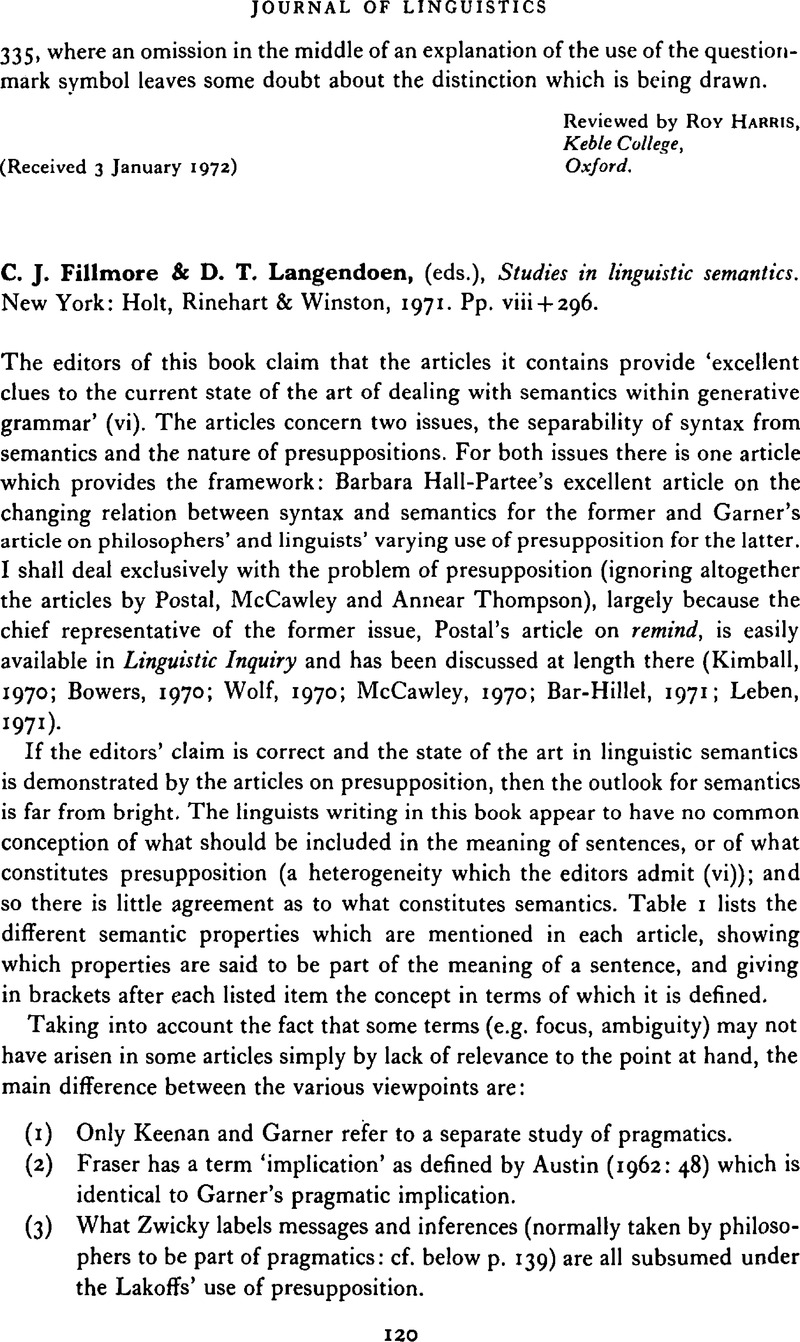Crossref Citations
This article has been cited by the following publications. This list is generated based on data provided by Crossref.
Palmer, F. R.
1973.
D. D. Steinberg & L. A. Jakobovits (eds.), Semantics: an interdisciplinary reader inphilosophy, linguistics and psychology. Cambridge: The University Press, 1971. Pp. x + 603..
Journal of Linguistics,
Vol. 9,
Issue. 2,
p.
361.



